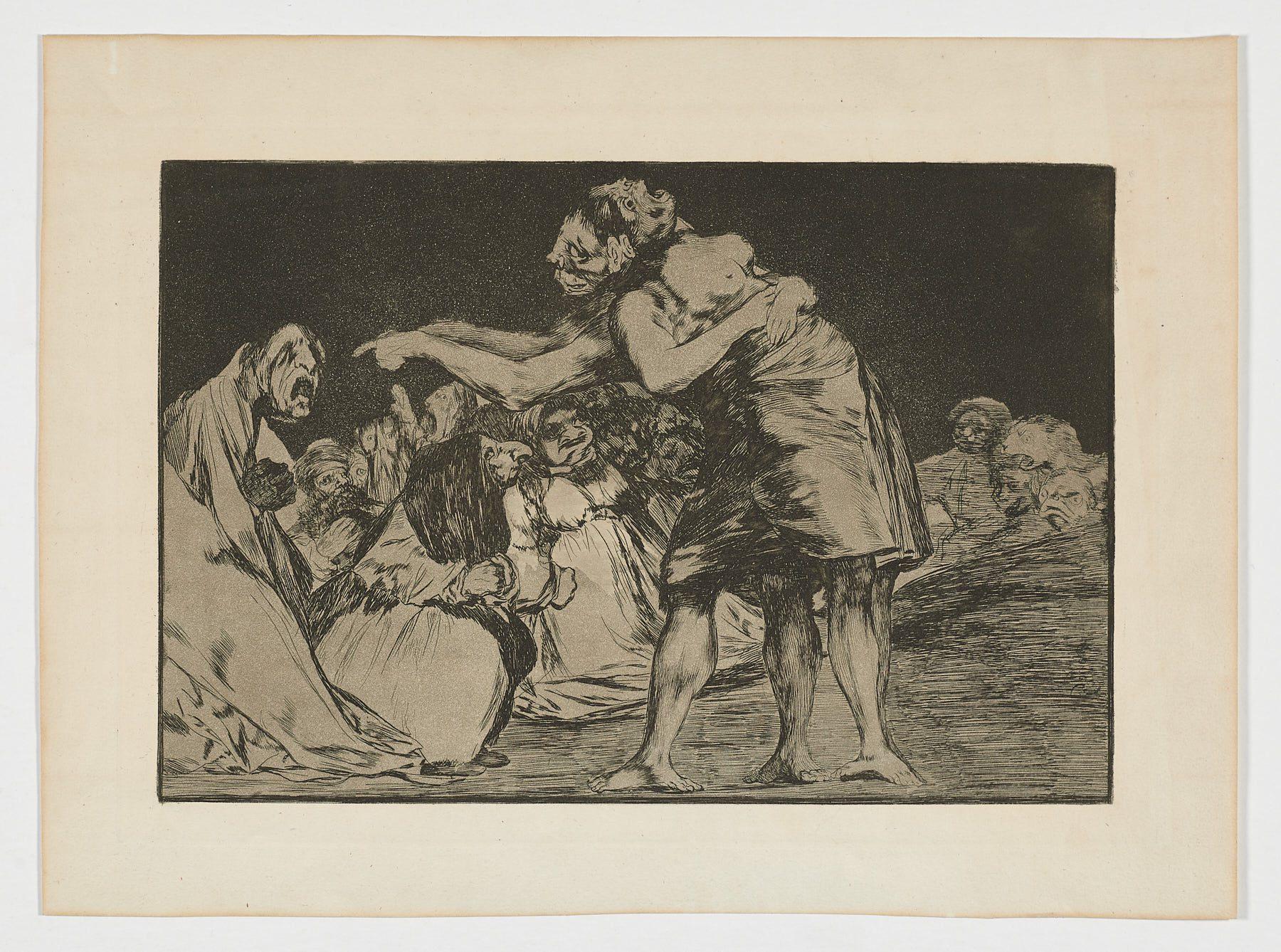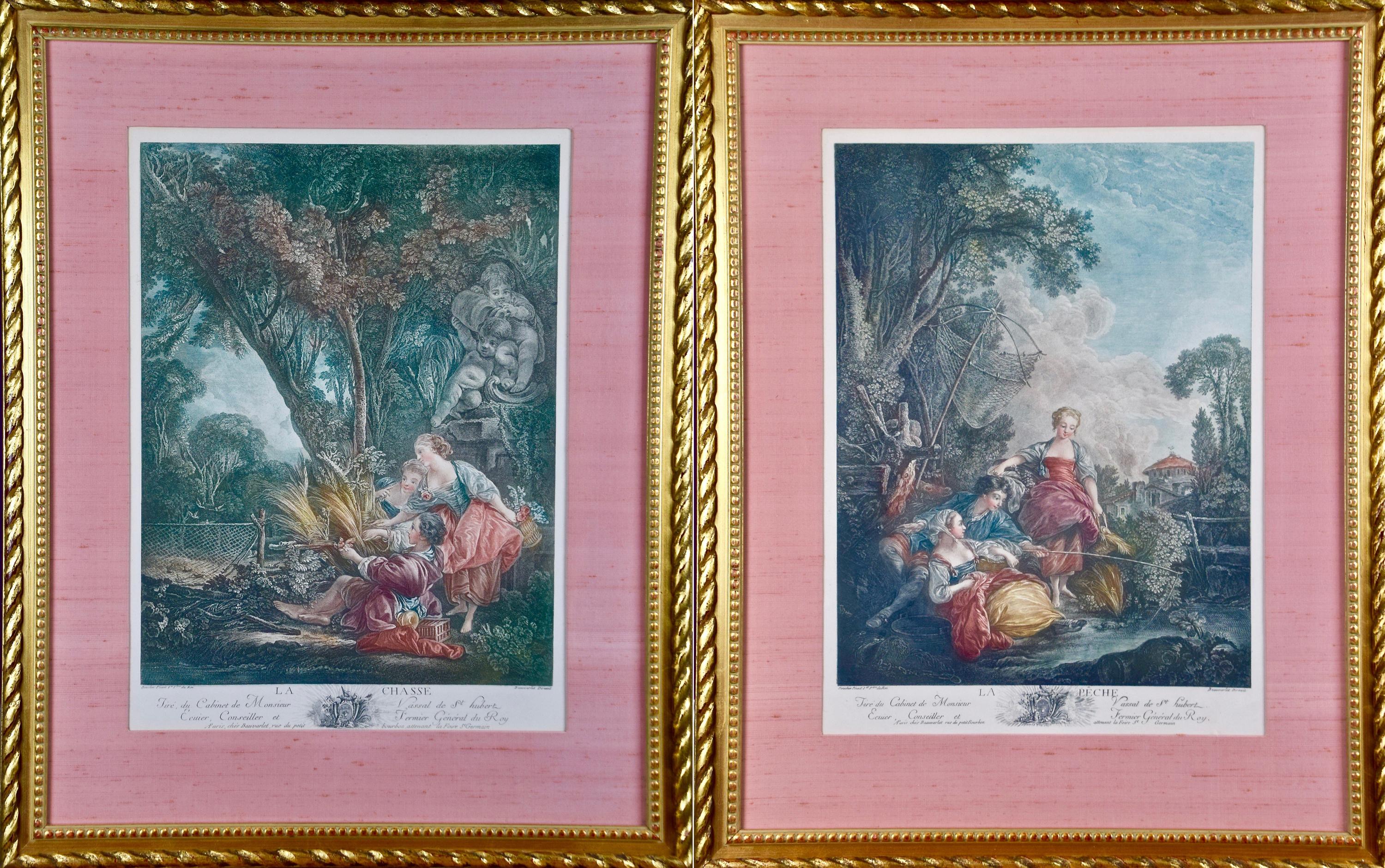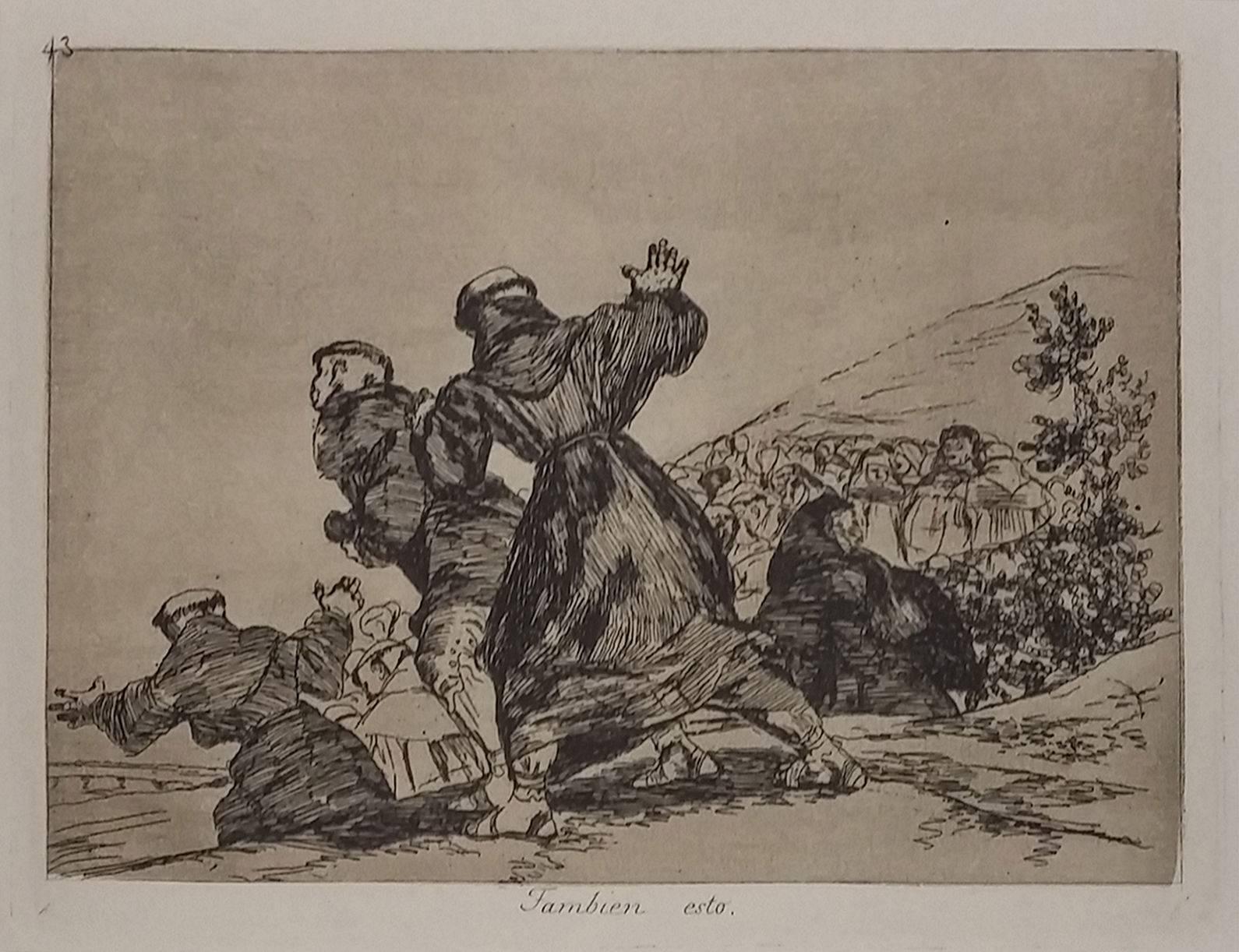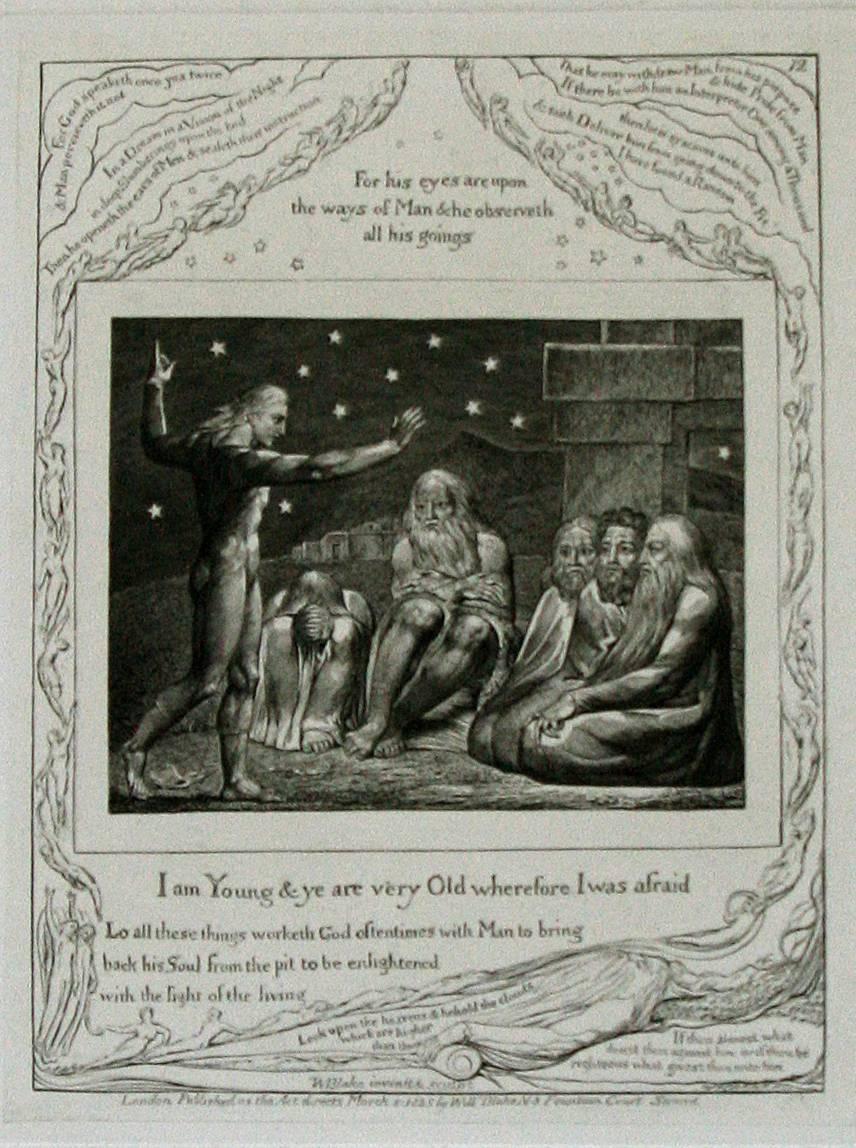Items Similar to Muse Terpsichore: Framed Hand-colored 19th C. Engraving after 17th C. Painting
Want more images or videos?
Request additional images or videos from the seller
1 of 10
After Eustache Le SueurMuse Terpsichore: Framed Hand-colored 19th C. Engraving after 17th C. Painting 1803
1803
About the Item
"Dessine par Gallier" is a hand-colored engraving and etching by Pierre Laurent (1739-1809) and Pierre Audouin (1768-1822) after a painting by Eustache Le Sueur (1617-1655) in the 17th century. It is plate III from the set of three Muses, published in "Musée français" in Paris in 1803. It depicts the muse Terpsichore, thought to represent Calliope, seated striking a triangular musical instrument. It is held in the collection of The British Museum.
This hand-colored engraving is presented in an ornate antiqued gold-colored wood frame with a beaded inner trim and raised scroll work in the corners and the center of the upper, lower and both side moldings and a beige mat. There is loss of a small area of frame scroll work in the right lower corner and minimal discoloration in the upper margin, but the frame and print are otherwise in excellent condition. The frame measures 23.25" x 18.5" x 1.63".
- Creator:After Eustache Le Sueur (1617 - 1655)
- Creation Year:1803
- Dimensions:Height: 23.25 in (59.06 cm)Width: 18.5 in (46.99 cm)Depth: 1.63 in (4.15 cm)
- Medium:
- Movement & Style:
- Period:
- Condition:
- Gallery Location:Alamo, CA
- Reference Number:
About the Seller
5.0
Vetted Seller
These experienced sellers undergo a comprehensive evaluation by our team of in-house experts.
Established in 2011
1stDibs seller since 2019
233 sales on 1stDibs
Typical response time: 1 hour
- ShippingRetrieving quote...Ships From: Alamo, CA
- Return PolicyA return for this item may be initiated within 7 days of delivery.
More From This SellerView All
- Pair of Hand-colored Romantic French Engravings after Francois BoucherBy (After) Francois BoucherLocated in Alamo, CAA pair of French classical romantic prints original created in the 18th century by Jacques-Firmin Beauvarlet (1731-1797) after paintings by Francois Boucher (1703-1770), utilizing ...Category
18th Century Romantic Figurative Prints
MaterialsEtching, Engraving
- A Pair of Framed 19th Century Colored Lithographs of Tudor Scenes by Joseph NashBy Joseph NashLocated in Alamo, CAThis is a pair of framed 19th century tinted lithographs with hand-coloring entitled "Gallery Over the Hall, Knowle, Kent" and "Terrace Bramshill, Hants" by Charles Joseph Hullmandel (1789-1850) after drawings by Joseph Nash (1809-1878), from "Mansions of England in the Olden Time", published in London in 1839-1849. Nash's publication consists of a series of views of Tudor domestic architecture, which Nash said depicted "the most characteristic features of the domestic architecture of the Tudor Age, and also illustrating the costumes, habits, and recreations of our ancestors." The scenes of the aristocratic ladies and gentlemen (including Henry VIII and Queen Elizabeth I), who are depicted inhabiting the rooms of these great houses, were taken directly from the portraits on the walls. Charles Joseph Hullmandel, was involved in the creation of these lithographs. He was a famous British lithographer, who invented the "lithotint" process, which he named and patented in 1840. This technique, allowing for greater nuance and value gradation than pure lithography, was an ideal means of expression for Nash's historically rich and picturesque depictions of Tudor mansions and their inhabitants. Hullmandel is also remembered for creating many lithographs from the paintings by J. M. W. Turner. The "Gallery Over the Hall" depicts a great hall with children playing with skittles (wooden pins resembling bowling pins), a doll and what looks to be a St Charles spaniel, while a lady in Tudor attire watches over them next to a massive stone fireplace. Adults are watching from in the distance while a man bows...Category
Late 19th Century Romantic Interior Prints
MaterialsLithograph
- Giovanni Piranesi Etching of Ancient Roman Architecture, 18th CenturyBy Giovanni Battista PiranesiLocated in Alamo, CA"Veduta del Sepolcro della Famiglia Plauzia per la Strada Che Conduce da Roma a Tivoli vicino a Ponte Lugano" from "Le Antichità Romane" (Roman Antiquities), one of the most famous works by Piranesi. "Antichita" illustrates the tombs along the Appian Way...Category
Early 18th Century Old Masters Figurative Prints
MaterialsDrypoint, Engraving, Etching
- "Marine Chantier de Construction": 18th C. Engraving of Shipbuilding by DiderotBy Denis DiderotLocated in Alamo, CA"Marine Chantier de Construction", plate VIII from the 18th century "Encyclopédie, ou dictionnaire raisonné des sciences, des arts et des métiers" (Encyclopedia, or a Systematic Dict...Category
1750s Realist Landscape Prints
MaterialsEtching, Engraving
- Flowering Iris & Other Botanicals: Framed 17th C. Besler Hand-colored EngravingLocated in Alamo, CAThis is a hand-colored copper-plate engraving entitled "I. Spatula foetida - II. Caucalis Dodonei - III. Cruciata", depicting three flowering plants, including an Iris, from Basilius Besler's landmark work, Hortus Eystettensis (Garden at Eichstatt), first published in 1613 in Eichstatt, Germany near Nuremberg and later in 1640 and 1713. This beautiful hand-colored botanical engraving is presented in a gold-colored wood frame with a French mat...Category
Mid-17th Century Academic Still-life Prints
MaterialsEngraving
- Redoute Hand-colored Engraving of Cactus Flowers "Cactus Peruvianus Cierge"By Pierre-Joseph RedoutéLocated in Alamo, CAThis framed hand-colored stipple engraving entitled "Cactus Peruvianus Cierge du Pérou" by Pierre-Joseph Redouté, Plate 58 from his illustrated publication 'Plantarum Historia Succulentarum ou Histoire des Plantes Grasses', published in Paris in 1799. It depicts a branching limb of a cactus with a beautiful flower. There is a separate detail of the anatomy of a seed with early growth. Redoute was a pioneer of the stipple engraving technique, which he used to create this image. It involves utilizing a series of small dots worked into a copper plate rather than the more common lines. These dots can be made smaller or thicker depending on the degree of opacity the artist intends for various areas of the print. When inked and applied to paper, this allows for a greater portion of the paper to be seen, which accentuates the appearance of luminosity of the subject the artist is creating. Different color inks are used in the printing process, a time consuming technique known as "a la poupee". The engraving is then finished with watercolor to further enhance the beauty and realism of the print subject. This engraving of a flowering cactus is presented in silver-colored ribbed wood frame and a double mat; cream-colored outer mat and heather green inner mat. The frame measures 21.25" high by 17.25" wide by 1.13" deep. The sheet measures 19.88" high by 14" wide. There are wide margins with a few short tears and chips along the the left, right and upper edges, which are all covered by the mat. There are small spots predominantly in the margins, with a few present in the image area. The print is otherwise in very good condition. There is another Redoute flowering cactus listed on 1stdibs, LU117326853392, which is framed and matted identically to this one. The pair would make an attractive display grouping. Pierre-Joseph Redouté (1759-1840), was a painter and botanist originally from Belgium, who pursued his extremely successful artistic career in France. He is well known for his watercolor paintings of roses, lilies and other flowers and their subsequent folio-sized, color stipple engravings. Some believe him to be the greatest botanical illustrator of all time. Redouté was a favorite of the French royal court at the time and of the post French...Category
Late 18th Century Naturalistic Still-life Prints
MaterialsEngraving
You May Also Like
- Francisco De Goya Desastres de guerra Sera lo mismo 1edition original art printBy Francisco GoyaLocated in Miami, FLFrancisco De Goya (Spain, 1746-1828) 'Será lo mismo (Estampa 21)', ca.1810-1014 Serie: Desastres de la guerra burnished aquatint, etching on wellum paper...Category
1810s Romantic Prints and Multiples
MaterialsDrypoint, Vellum, Etching, Aquatint
- Francisco De Goya Disparates Disparate desordenados 1edition original art printBy Francisco GoyaLocated in Miami, FLFrancisco De Goya (Spain, 1746-1828) 'Disparates. Disparate desordenado (estampa 7)', ca.1815-1819 etching, aquatint, dry point on vellum paper 11.7 x 15.9 in. (29.6 x 40.3 cm.) 1st ...Category
1810s Romantic Prints and Multiples
MaterialsAquatint, Drypoint, Vellum, Etching
- TAMBIEN ESTOBy Francisco GoyaLocated in Aventura, FLTambien esto / So is this (Disasters of War, plate 43, Harris 163, Delteil 162). Original etching, burnished aquatint, and burnisher, c. 1808-1814. The clergy are running; their floc...Category
Early 19th Century Romantic Figurative Prints
MaterialsEtching, Paper, Drypoint
- Cottage and HarvestersBy Sir Frank ShortLocated in Storrs, CTCottage and Harvesters (after a watercolor by Peter De Wint, 1784-1849). 1907. Mezzotint. Hardie 88. 6 5/8 x 10 11/16 (sheet 14 x 19 1/4). Edition 100. Housed in a 16 x 20 mat. A ver...Category
Early 1900s Romantic Landscape Prints
MaterialsMezzotint
- The Wrath of Elihu: 'I Am Young, And Ye Are Very Old, Wherefore I Was Afraid.'By William BlakeLocated in Storrs, CTThe Wrath of Elihu. 'I Am Young, And Ye Are Very Old, Wherefore I Was Afraid'. 1823-25. Engraving. .Binyon catalog 117 state ii, Bindman catalog 632. Image 7 7/8 x 5 15/16; plate 8 ...Category
Early 19th Century Romantic Figurative Prints
MaterialsEngraving
- Timber Raft on the RhineBy Sir Frank ShortLocated in Storrs, CTTimber Raft on the Rhine (after the watercolor by J.M.W. Turner in the National Gallery). 1898. Mezzotint. Hardie 66. 8 1/4 x 11 11/16 (sheet 10 5/16 x 13 1/2). Edition 100. A rich, ...Category
1890s Romantic Landscape Prints
MaterialsMezzotint
Recently Viewed
View AllMore Ways To Browse
Framed Scrolls
Small Antique Art Frame
Antique Gold Engraving
Engraving 17th
19th Century Engraving Framed
Antique Engravings Set
18th Century Engraving Set
Framed Antique Engravings
19th Hand Colored Engraving
Antique Ornate Gold Frame
Antique Set Framed Print
Set Of Antique Prints Framed
Antique Paris Engravings
Sets Of Colored Engravings
Hand Colored Engraving Set
Set Of Hand Colored Engravings
Antique Print Engraving Paris
Romantic Iii





